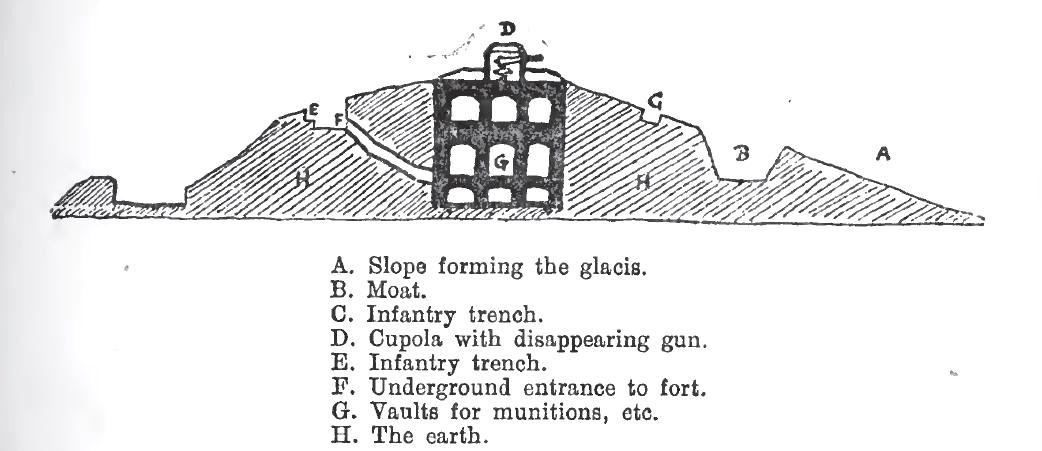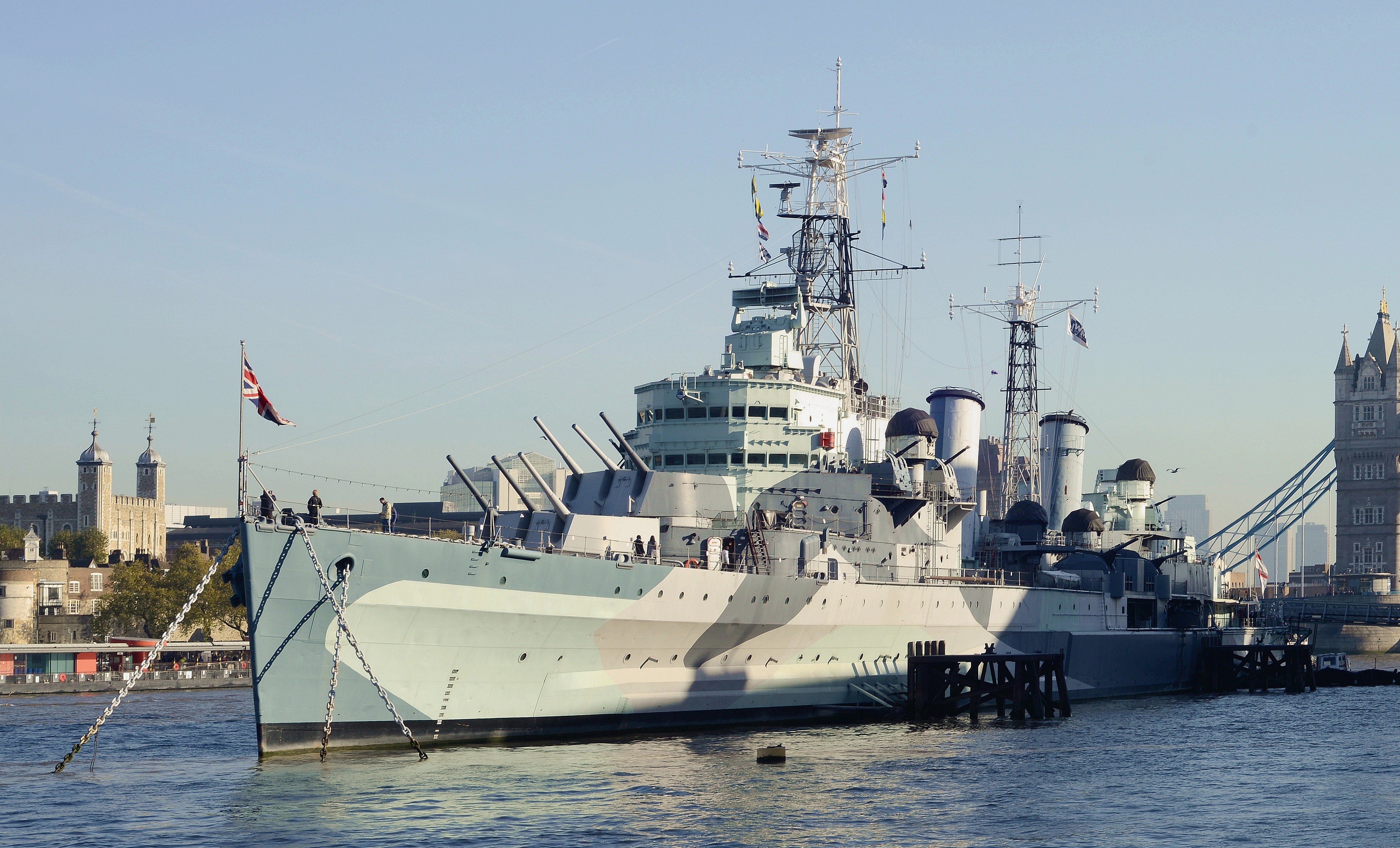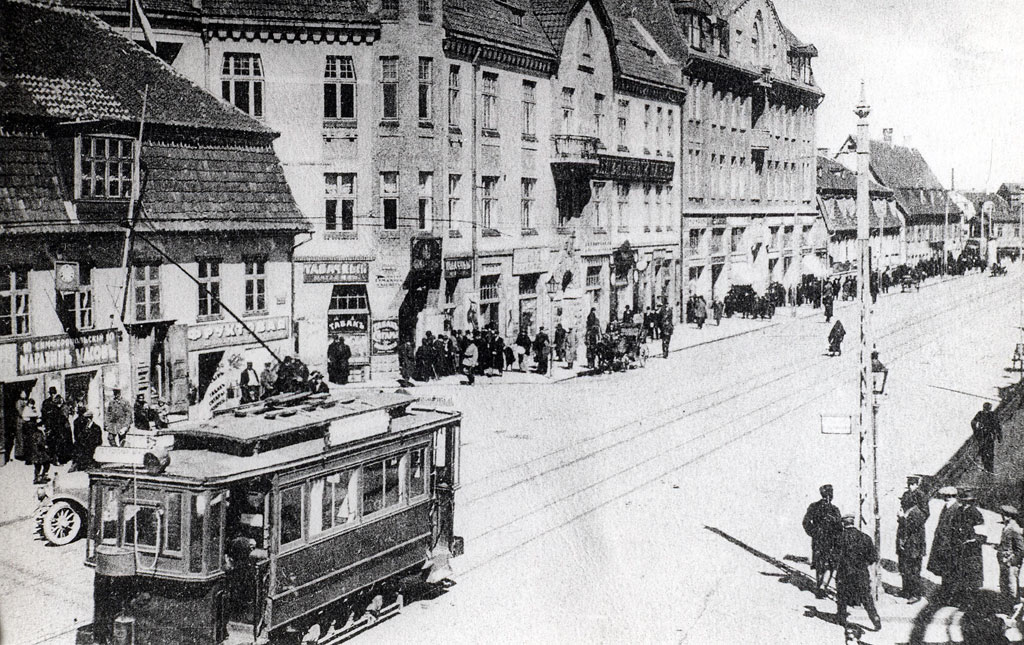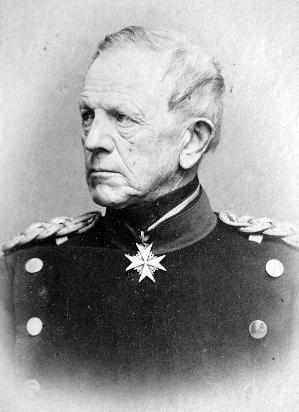|
Battle Of Liège
The Battle of Liège (5–16 August 1914) was the opening engagement of the German invasion of Belgium and the first battle of the First World War. The city of Liège was protected by a ring of modern fortresses, one of several fortified cities to delay an invasion to allow troops from the powers which had guaranteed Belgian neutrality to assist the Belgian Army in the expulsion of the invaders. The German 1st Army arrived late 5 August 1914 and captured the city on 7 August when Erich Ludendorff drove in and convinced the garrison to surrender. The surrounding forts fought on and several attacks by German infantry were costly failures. Super-heavy siege guns arrived and destroyed the forts one by one; the last fort surrendered on 16 August. The siege of Liège may have delayed the German invasion of France by four to five days. Railways in the Meuse river valley needed by the German armies in eastern Belgium were closed for the duration of the siege and German troops did not ... [...More Info...] [...Related Items...] OR: [Wikipedia] [Google] [Baidu] |
Western Front (World War I)
The Western Front was one of the main Theatre (warfare), theatres of war during World War I. Following the outbreak of war in August 1914, the Imperial German Army, German Army opened the Western Front by German invasion of Belgium (1914), invading Luxembourg and Belgium, then gaining military control of important industrial regions in Third Republic of France, France. The German advance was halted with the First Battle of the Marne, Battle of the Marne. Following the Race to the Sea, both sides dug in along a meandering line of fortified trench warfare, trenches, stretching from the North Sea to the Swiss frontier with France, the position of which changed little except during early 1917 and again in 1918. Between 1915 and 1917 there were several offensives along this Front (military), front. The attacks employed massive artillery bombardments and massed infantry advances. Entrenchments, machine gun emplacements, barbed wire, and artillery repeatedly inflicted severe casualties ... [...More Info...] [...Related Items...] OR: [Wikipedia] [Google] [Baidu] |
Siege Of Namur (1914)
The siege of Namur () was a battle between Belgian and German forces around the fortified city of Namur during the First World War. Namur was defended by a ring of modern fortresses, known as the Fortified Position of Namur and guarded by the 4th Division of the Belgian Army. The purpose of the fortified Belgian cities was to delay an invasion force until troops from the states guaranteeing Belgian independence came to their aid. The French Fifth Army planned to counter-attack while the Germans were besieging Namur. The German 2nd Army arrived in force on 20 August 1914 and used the experience gained from the Battle of Liège . The Germans did not attempt a ''coup de main'' but waited until the next day and bombarded the forts using super-heavy siege artillery and four batteries on loan from Austria-Hungary. The forts were destroyed by the bombardment, some being demolished by conventional heavy artillery rather than the siege guns, due to flaws in the concrete protection e ... [...More Info...] [...Related Items...] OR: [Wikipedia] [Google] [Baidu] |
Central European Time
Central European Time (CET) is a standard time of Central, and parts of Western Europe, which is one hour ahead of Coordinated Universal Time (UTC). The UTC offset, time offset from UTC can be written as UTC+01:00. It is used in most parts of Europe and in several African countries. CET is also known as Middle European Time (MET, German: :de:Mitteleuropäische Zeit, MEZ) and by colloquial names such as Amsterdam Time, Berlin Time, Brussels Time, Budapest Time, Madrid Time, Paris Time, Stockholm Time, Rome Time, Prague time, Warsaw Time or Romance Standard Time (RST). The 15th meridian east is the central axis per UTC+01:00 in the world system of time zones. As of 2023, all member state of the European Union, member states of the European Union observe summer time (daylight saving time), from the last Sunday in March to the last Sunday in October. States within the CET area switch to Central European Summer Time (CEST, UTC+02:00) for the summer. The next change to CET is scheduled ... [...More Info...] [...Related Items...] OR: [Wikipedia] [Google] [Baidu] |
Light Cruiser
A light cruiser is a type of small or medium-sized warship. The term is a shortening of the phrase "light armored cruiser", describing a small ship that carried armor in the same way as an armored cruiser: a protective belt and deck. Prior to this smaller cruisers had been of the protected cruiser model, possessing armored decks only. While lighter and smaller than other contemporary ships they were still true cruisers, retaining the extended radius of action and self-sufficiency to act independently around the world. Cruisers mounting larger guns and heavier armor relative to most light cruisers would come to be known as heavy cruisers, though the designation of 'light' versus 'heavy' cruisers would vary somewhat between navies. Through their history light cruisers served in a variety of roles, primarily on long-range detached patrol work, covering other military operations or global shipping lanes, as scouts and fleet support vessels for battle fleets, as destroyer command ship ... [...More Info...] [...Related Items...] OR: [Wikipedia] [Google] [Baidu] |
Liepāja
Liepāja () (formerly: Libau) is a Administrative divisions of Latvia, state city in western Latvia, located on the Baltic Sea. It is the largest city in the Courland region and the third-largest in the country after Riga and Daugavpils. It is an important ice-free port. In the 19th and early 20th century, it was a favourite place for sea-bathers and travellers, with the town boasting a fine park, many pretty gardens and a theatre. Liepāja is however known throughout Latvia as the "City where the wind is born", likely because of the constant sea breeze. A song of the same name () was composed by Imants Kalniņš and has become the anthem of the city. Its reputation as the windiest city in Latvia was strengthened with the construction of the largest wind farm in the nation (33 Enercon wind turbines) nearby. Liepāja is chosen as the European Capital of Culture in 2027. Names and toponymy The name is derived from the Livonian language, Livonian word ''Liiv,'' which means "sand" ... [...More Info...] [...Related Items...] OR: [Wikipedia] [Google] [Baidu] |
London Stock Exchange
The London Stock Exchange (LSE) is a stock exchange based in London, England. the total market value of all companies trading on the LSE stood at US$3.42 trillion. Its current premises are situated in Paternoster Square close to St Paul's Cathedral. Since 2007, it has been part of the London Stock Exchange Group (LSEG, which the exchange also lists (ticker symbol LSEG)). Despite a post-Brexit exodus of stock listings from the LSE, it was the most valued stock exchange in Europe as of 2023. According to the 2020 Office for National Statistics report, approximately 12% of UK-resident individuals reported having investments in stocks and shares. According to a 2020 Financial Conduct Authority report, approximately 15% of British adults reported having investments in stocks and shares. History Coffee House The Royal Exchange, London, Royal Exchange had been founded by the English financier Thomas Gresham and Sir Richard Clough on the model of the The Belgian bourse of Antwerp, An ... [...More Info...] [...Related Items...] OR: [Wikipedia] [Google] [Baidu] |
Helmuth Von Moltke The Younger
Graf Helmuth Johannes Ludwig von Moltke (; 25 May 1848 – 18 June 1916), also known as Moltke the Younger, was a German general and Chief of the Great German General Staff, a member of the House of Moltke. He was also the nephew of '' Generalfeldmarschall'' ''Graf'' Helmuth Karl Bernhard von Moltke, who is commonly called "Moltke the Elder" to differentiate the two. Upon becoming the head of the General Staff, Moltke led the German Army from 1 January 1906 to 14 September 1914 during the opening months of World War I. His legacy remains a matter of controversy, due to his involvement in Germany's decision to go to war and in the execution of the invasion of France and Belgium that culminated in the First Battle of the Marne. Early career Helmuth von Moltke was born in Biendorf, Grand Duchy of Mecklenburg-Schwerin, and was named after his uncle, Helmuth Karl Bernhard von Moltke, future '' Generalfeldmarschall'' (Field Marshal) and hero of the Unification of Germany. Duri ... [...More Info...] [...Related Items...] OR: [Wikipedia] [Google] [Baidu] |
Oberste Heeresleitung
The ''Oberste Heeresleitung'' (, "Supreme Army Command", OHL) was the highest echelon of command of the army (''Heer'') of the German Empire. In the latter part of World War I, the Third OHL assumed dictatorial powers and became the ''de facto'' political authority in the Empire. Formation and operation After the formation of the German Empire in 1871, the Prussian Army, Royal Saxon Army, Army of Württemberg and the Bavarian Army were autonomous in peacetime, each kingdom maintaining a separate war ministry and general staff to administer their forces. On the outbreak of war, the Constitution of the German Empire made the German Emperor commander-in-chief of the combined armies (''Oberster Kriegsherr'', "supreme warlord"). The Emperor's role as commander-in-chief was largely ceremonial and authority lay with the Chief of the German General Staff, who issued orders in the Emperor's name. The pre-war Chief of the General Staff was Colonel General Helmuth von Moltke and the ' ... [...More Info...] [...Related Items...] OR: [Wikipedia] [Google] [Baidu] |
German General Staff
The German General Staff, originally the Prussian General Staff and officially the Great General Staff (), was a full-time body at the head of the Prussian Army and later, the Imperial German Army, German Army, responsible for the continuous study of all aspects of war, and for drawing up and reviewing plans for mobilization or campaign. It existed unofficially from 1806, and was formally established by law in 1814. The first Staff (military), general staff in existence, it was distinguished by the formal selection of its officers by intelligence and Merit system, proven merit rather than patronage or wealth, and by the exhaustive and rigorously structured training which its staff officers undertook. The Prussian General Staff also enjoyed greater freedom from political control than its contemporaries, and this autonomy was enshrined in law on the unification of Germany and the establishment of the German Empire in 1871. It came to be regarded as the home of Militarism#Germany, G ... [...More Info...] [...Related Items...] OR: [Wikipedia] [Google] [Baidu] |
German Empire
The German Empire (),; ; World Book, Inc. ''The World Book dictionary, Volume 1''. World Book, Inc., 2003. p. 572. States that Deutsches Reich translates as "German Realm" and was a former official name of Germany. also referred to as Imperial Germany, the Second Reich or simply Germany, was the period of the German Reich; . from the unification of Germany in 1871 until the German revolution of 1918–1919, November Revolution in 1918, when the German Reich changed its form of government from a monarchy to a Weimar Republic, republic. The German Empire consisted of States of the German Empire, 25 states, each with its own nobility: four constituent Monarchy, kingdoms, six Grand duchy, grand duchies, five Duchy, duchies (six before 1876), seven Principality, principalities, three Free imperial city, free Hanseatic League, Hanseatic City-state, cities, and Alsace–Lorraine, one imperial territory. While Prussia was one of four kingdoms in the realm, it contained about two-thirds ... [...More Info...] [...Related Items...] OR: [Wikipedia] [Google] [Baidu] |
Alfred Von Schlieffen
Graf Alfred von Schlieffen (; 28 February 1833 – 4 January 1913) was a German field marshal and strategist who served as chief of the Imperial German General Staff from 1891 to 1906. His name lived on in the 1905–06 " Schlieffen Plan", then ''Aufmarsch I'', a deployment plan and operational guide for a decisive initial offensive operation/campaign in a two- front war against the French Third Republic. Biography Born in Prussia, Germany, on 28 February 1833, the son of a Prussian Army officer, he was part of an old Prussian noble family, the Schlieffen family. He lived with his father, Major Magnus von Schlieffen, on their estate in Silesia, which he left to go to school in 1842. The young Schlieffen had shown no interest in joining the military and so he did not attend the traditional Prussian cadet academies. Instead, he studied at the University of Berlin. While he was studying law, he enlisted in the army in 1853 for his one year of compulsory military service.V. J ... [...More Info...] [...Related Items...] OR: [Wikipedia] [Google] [Baidu] |
Gete River
The Gete (; ) is a river in Belgium which flows south to north. It is a left tributary of the Demer. The Gete is formed by the confluence of the rivers ''Grote Gete'' ("Large Gete") and ''Kleine Gete'' ("Small Gete") near Budingen. From Budingen the river continues for to the city of Halen, where it flows into the Demer. The river was the historical border between the Prince-Bishopric of Liège and the Duchy of Brabant. The source of the ''Grote Gete'' is situated in the village of Perwez. The length of the river to Budingen is . The river flows through Jodoigne, Hoegaarden and Tienen. The source of the ''Kleine Gete'' is in the village of Ramillies. It flows through Orp-Jauche, Hélécine Hélécine (; ; , ) is a municipality of Wallonia located in the Belgian province of Walloon Brabant. It has a total area is 16.62 km2 and had total population of 3,068 as of 1 January 2006, giving it a population density of 185 inhabitant ... and Zoutleeuw. Rivers of Belgium ... [...More Info...] [...Related Items...] OR: [Wikipedia] [Google] [Baidu] |




